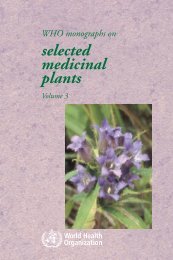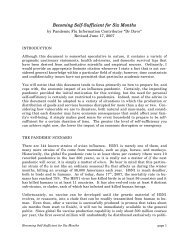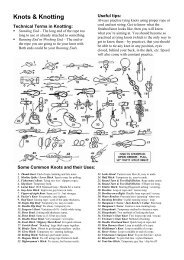You also want an ePaper? Increase the reach of your titles
YUMPU automatically turns print PDFs into web optimized ePapers that Google loves.
MORELS AND SADDLE FUNGI<br />
These fungi are especially recommended for eating because<br />
no one who has seen even a picture of a morel could confuse the<br />
plants with any poisonous kinds. They are absolutely safe for<br />
any amateur to collect and eat and, moreover, are exceedingly delicious.<br />
When one finds a spot where morels grow thickly it is<br />
well to keep it a secret, since one's friends will have no compunction<br />
about arriving first at the harvest.<br />
<strong>Edible</strong>: HELVELLA CRISPA<br />
GENUS Helvella<br />
Species of Helvella are known as the saddle fungi because of<br />
the marked resemblance of the caps to the shape of a saddle.<br />
Several kinds are found; the most common is Helvella ens-pa<br />
(Figure 55), the species name meaning wavy and referring to the<br />
margin of the cap. They grow singly or in groups of two, three,<br />
or four in wooded regions and swamps and can be found rather<br />
readily because of their pure white color. The cap is more or<br />
less irregularly saddle-shaped and varies in width up to 2 inches;<br />
the stem is most marvelously fluted and twisted.<br />
No other species resembles this one closely enough to be mistaken<br />
for it.<br />
GENUS Gyromitra<br />
Edibility doubtful: GYROMITRA ESCULENTA<br />
This mushroom is closely related to the saddle fungi and<br />
therefore may be considered in the same group. Gyromitra means<br />
gyrose or convoluted and refers to the characteristic shape of the<br />
cap, which is made up of rounded folds (Figure 56). This is one<br />
of the more common spring mushrooms in wooded areas; it often<br />
grows in low places and swamps but is by no means restricted to<br />
sites of that kind. The cap is chocolate brown, up to 4 or 5 inches<br />
in diameter, much ridged and convoluted, brittle, and hollow. The<br />
stem is short, thick, white, and sometimes branched at the top.<br />
9'
















